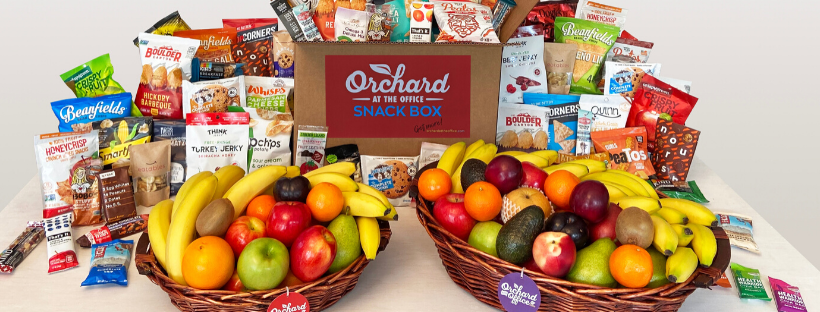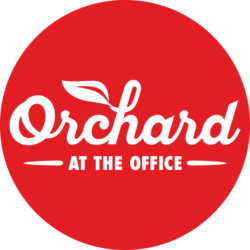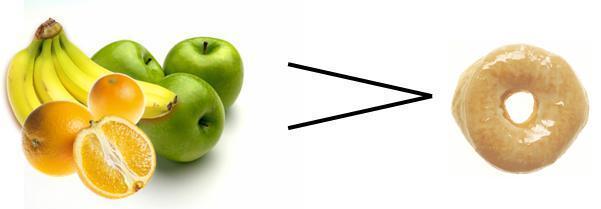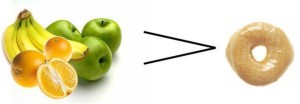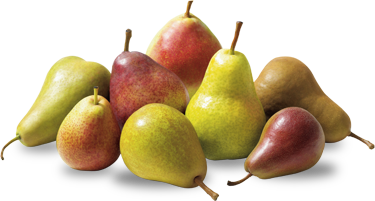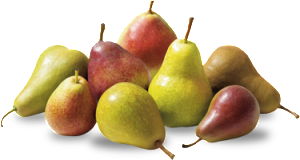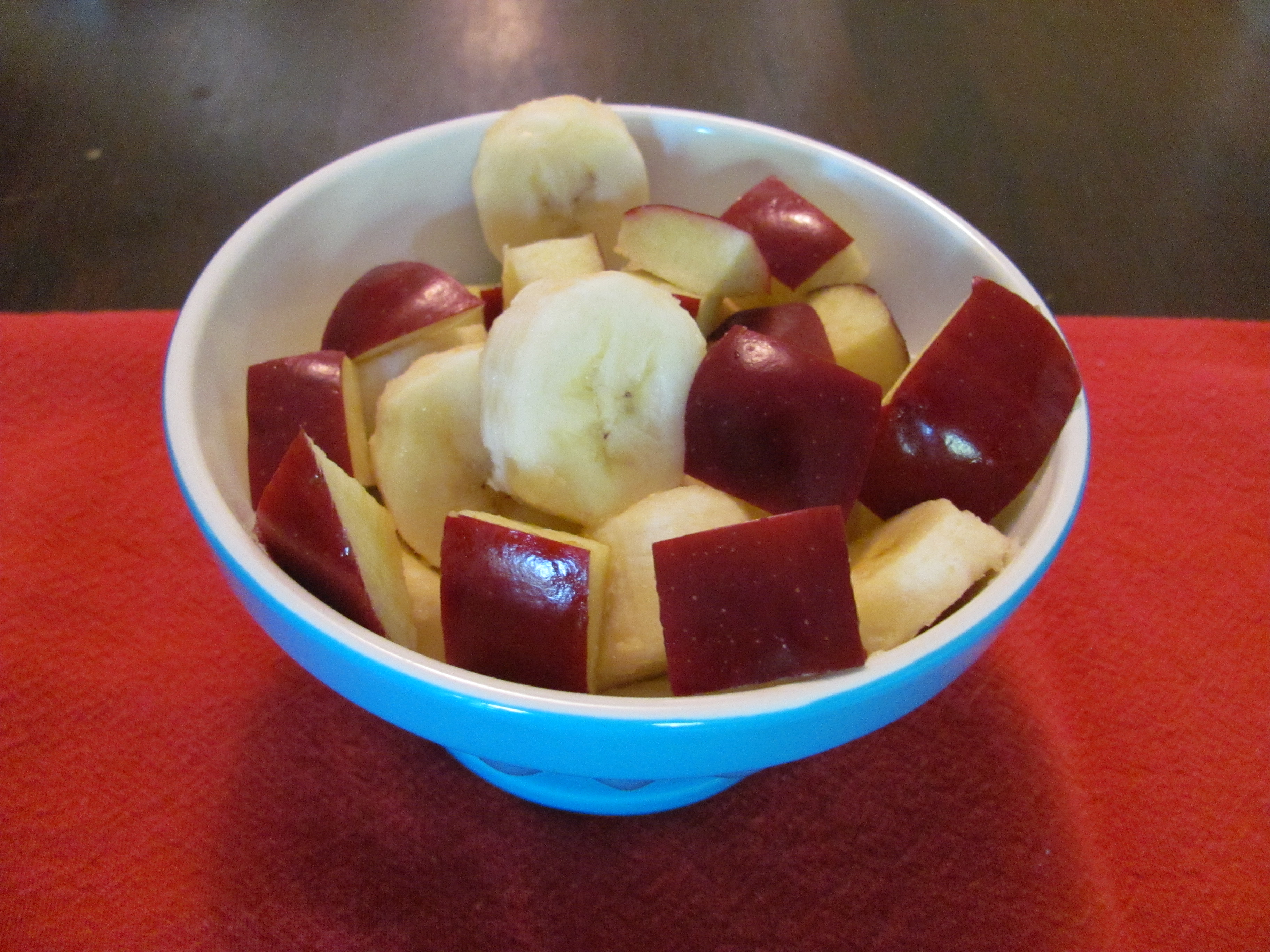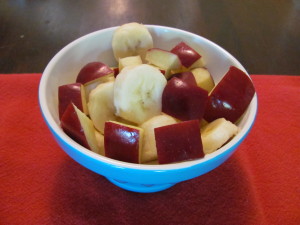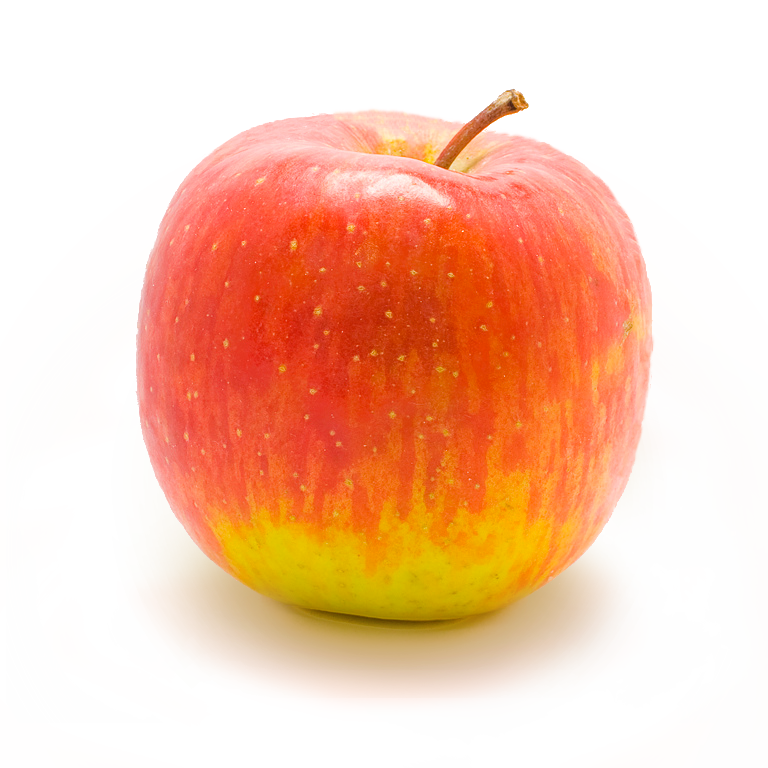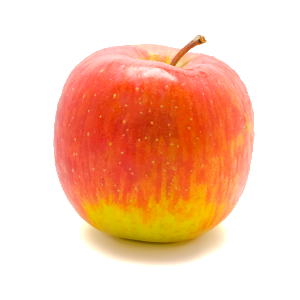Does it really matter if you eat a piece of fruit in the morning instead of baked goods? Stopping by the bakery on the way to work adds an extra step to your commute. What is the impact to your belt line? Orchard At The Office offers this comparison so you can draw your own conclusions…
Bananas vs. Donuts
Here, we’re examining the difference between one medium-sized banana and one regular-sized (66 gram) donut. Here’s a side-by-side comparison (banana information first):
Calories: 105 vs. 239
Saturated Fat: 1% U.S. Recommended Daily Allowance (RDA) vs. 16% RDA
Sodium: 1 mg vs. 232 mg
Potassium: 12% RDA vs. 2% RDA
Vitamin C: 17% RDA vs. 1% RDA
Apples vs. Blueberry Muffin
Some might think that since these muffins contain fruit, the nutritional content of the berries “balance out” the confectionery, in the same way one might think getting vegetable toppings on a pizza makes it “healthy”. Let’s take a look. One medium apple is compared to a small (66 gram) blueberry muffin:
Calories: 95 vs. 259
Saturated Fat: 0% RDA vs. 13% RDA
Sodium: 2 mg vs. 208 mg
Potassium: 6% RDA vs. 2% RDA
Vitamin C: 14% RDA vs. 1% RDA
Oranges vs. Bagels
This is the nutritional data from one medium-sized orange compared to a regular (57 gram) bagel:
Calories: 62 vs. 146
Saturated Fat: 0% RDA vs. 1% RDA
Sodium: 0 mg vs. 255 mg
Potassium: 7% RDA vs. 1% RDA
Vitamin C: 116% RDA vs. 1% RDA
Certainly, there’s nothing wrong with the occasional donut or bagel. However, cultivating a lifestyle of wellness is a series of small steps – and the conversion to delicious fresh fruit is an easy one to take! Reach into that basket and take a bite of fitness, from your friends at Orchard At The Office.
